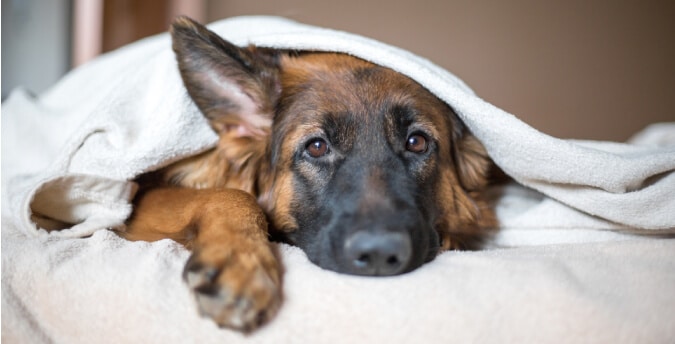Colds and the Canine Flu

We all dread the winter colds that come during the cooler months of the year, or that random summer cold you get once in a blue moon that has you blowing your nose for two weeks and ruins your Fourth of July plans. Colds are an annoying common occurrence in humans, but can your dog catch a cold? The answer is yes, but they probably did not contract the cold from you. Most likely, your pup picked up this common virus from a playmate at the park or doggie daycare. This virus is also a strain specific to dogs, so you don’t have to worry about abstaining from cuddles or playtime with your beloved pup. Just like in humans, dogs just need some rest and TLC to overcome their colds.
Taking Action
Always call your veterinarian of choice if you are worried that your dog is unwell, but here are some cold symptoms to watch out for in your dog;
- Coughing
- Runny Nose
- Fever
- Sneezing
- Lethargy
If you notice your dog displaying these cold symptoms, make sure they get plenty of rest and keep them in a warm and dry place. If they have common dog toys or shared dog bowls, keep them clean and away from other dogs until they are feeling better. Within a few days you dog should be back to their energetic and playful self.
The canine influenza is a more serious illness that you should watch out for in your dog. The canine flu is spread easily from dog to dog, much like the common cold virus is transmitted. Symptoms can take eight days to show up in your dog or their playmate, so your pup can be exposed without your knowledge. Any dog can be affected by the canine flu, but puppies and elderly dogs are the most likely to contract the illness. Identifying the virus can be difficult since your pets can’t speak to you, but here some signs to watch out for in your dog:
- A loud cough
- Sneezing
- Lack of appetite
- Runny nose
- Lethargy
- Difficulty breathing
- Discharge from their eyes that progresses from a clear liquid to a greenish mucus
If your dog is suffering from several of these symptoms, contact your vet immediately to have a checkup. The good news is that your dog should be fully recovered within two weeks with rest and hydration. To keep the canine flu from spreading, clean everything they play with or rest on, including all their bedding, and limit their time with other dogs until they are well. Seeing your beloved dog ill can be a stressful time, but by being prepared and contacting their veterinarian at the first sign of illness, you can see your dog healthy again in no time.
